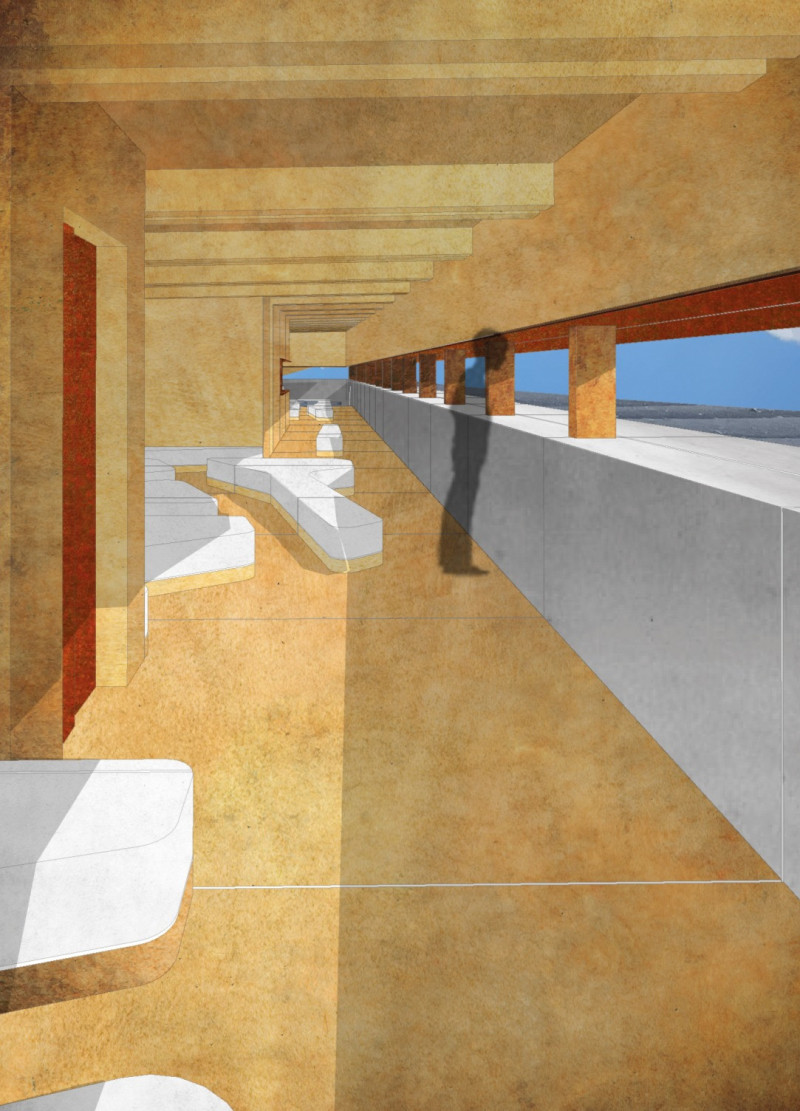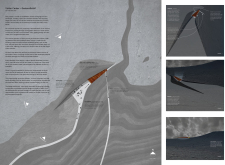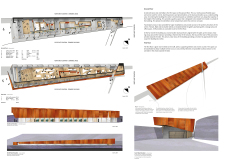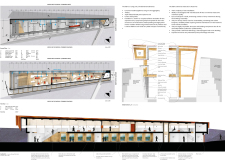5 key facts about this project
Spatially, the Visitor Center comprises two main levels. The ground floor features an entryway that leads to an expansive exhibition space, which is adaptable for multiple uses. Adjacent to this area is a café positioned to offer expansive views of the nearby lakes and volcanic formations. The first floor is dedicated to the café and additional support areas, elevating the visitor engagement experience through enhanced sightlines and natural light.
The architectural design integrates specific materials focused on sustainability and environmental response. Concrete forms the structural backbone, crafted from local aggregates to reduce transportation impact. Timber is employed for internal finishes, while corten steel panels constitute the exterior, responding to environmental conditions over time with a natural patina that reflects the landscape.
While many visitor centers may serve similar functions, this project distinguishes itself through its commitment to sustainable practices and contextual design. The use of recycled materials, such as cellulose insulation, contributes to its environmentally conscious ethos, while the emphasis on locally sourced materials encourages community interaction and craftsmanship. Moreover, the design prioritizes flexibility, allowing spaces to adapt to various events and functions in response to community needs.
The architectural design fosters a profound connection between visitors and the landscape. It incorporates large, strategically placed windows that frame views of the natural surroundings, thus enhancing the visitor experience. The structure's orientation and materials work in tandem to create spaces that not only serve a physical function but also invoke a sense of place within the dramatic Icelandic landscape.
For further exploration of this project, consider reviewing its architectural plans, sections, and design ideas for a comprehensive understanding of its innovative approaches and the architectural thought process behind its conception. These elements offer insights into how the Visitor Center integrates architecture with its environment while providing a valuable resource for visitors.


























